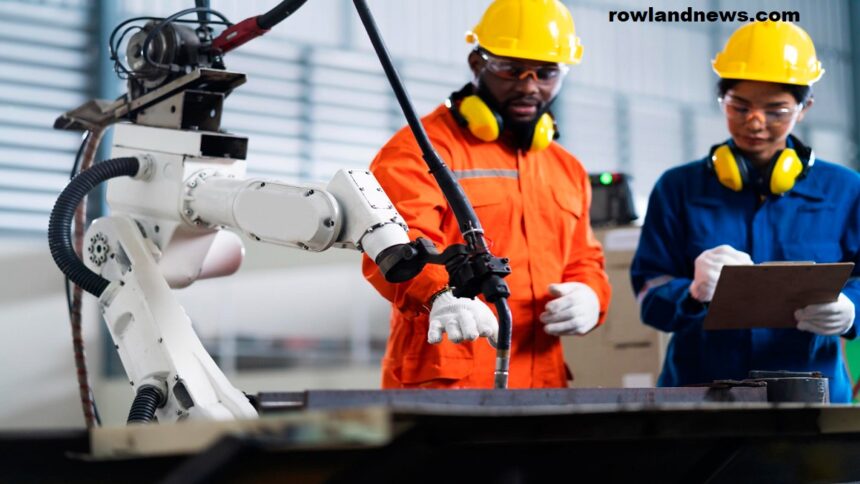The Creative Revolution
Imagine a popular artist in the gallery who is not a person at all, but an algorithm. Or picture a hit song on the charts that robot learning systems have co-written. Is it far-fetched? In 2025, this is reality.
Artificial intelligence is no longer limited to number crunching or logistics. It’s stepping on the canvas, composing symphonies, and designing brand logos with style. The creative industries, once thought to be the last bastion of human-only imagination, are being transformed as AI takes over jobs traditionally assigned to artists, musicians, and designers.
So what will this shift mean for creatives, consumers, and the future of art itself? We step inside a world where creativity meets code to find out.
What is AI in the Creative Industry?
In the creative industries, artificial intelligence utilizes machine learning, generative algorithms, and data-driven tools to support or independently create content in areas such as music, art, and industrial design. This is not replacing artists with robots. Instead, it provides creatives with intelligent tools to bring these ideas into being.
In 2025, such a partnership of human creativity and artificial intelligence yields work that is both new and deeply personal. This shift is a key component of creative industry trends for 2025.
AI in Art: When Algorithms Take Over Brushes
From Neural Networks to Masterpieces
In 2018, AI-generated art hit prime time when a painting created by an algorithm, Portrait of Edmond de Belamy, sold at Christie’s for $432,500. Since then, the change has been dramatic.
By 2025, AI tools for artists such as DALL·E and Midjourney will have become indispensable for digital artists. These generative AI tools can create complex backgrounds, apply artistic styles instantly, and inspire creativity.
Notable creators, such as Nigerian artist Osinachi, utilize AI in art to create culturally rich NFTs, blending machine learning with storytelling.
Real-World Applications: Museums and Galleries
Institutions are also adapting. AI exhibitions and tools, such as Google’s AI Experiments with Art, are being used to help students and visitors understand AI and its impact on emotion in art. AI in museums is no longer a novelty; it’s the norm.
Want to see how museums are adapting to the digital environment? Read from Smithsonian Institution.
Read Also: AI-Powered Healthcare: Transformations in Diagnostics and Treatment
The Algorithmic Composer: AI and Music
Music That Thinks, Feels, and Learns
By 2025, AI in music will have changed composition forever. Tools like AIVA and Soundraw allow musicians to compose soundtracks, enhance lyrics, and explore AI music composition at every level.
AI-generated soundtracks are now common among indie artists, YouTubers, and video creators. These AI music tools offer an accessible way to produce polished work with minimal resources.
Real-World Use: Pop Music Meets AI
Artists like Grimes have openly collaborated with AI on entire albums. At the 2024 Eurovision Song Contest, several countries used AI and human collaboration to co-write entries, expanding the boundaries of creative production.
Curious about music rights and algorithms? Check this BBC Technology article.
AI in Design: When Creativity Meets Efficiency
Smarter, faster, Beautiful
Designers now integrate artificial intelligence through platforms like Canva Magic Design and Adobe Sensei, making visual creation seamless.
In AI graphic design, these platforms help generate layouts, color palettes, and ad creatives instantly. UX/UI designers use UX/UI AI tools for wireframing, testing, and accessibility improvements. In AI in fashion design, machine learning predicts trends and streamlines production.
Branding with AI
Platforms like Looka and Tailor Brands are AI-powered branding platforms that generate logos and complete brand kits using AI in branding. These tools enable startups to launch brand identities within minutes using data on competitors and customer psychology.
Learn how AI helps startups in branding: Read MIT Sloan Management Review.
The Human-AI Partnership: Threat or Opportunity?
Some worry AI will replace human creativity, but the reality is more nuanced. In 2025, AI and human co-creation will be central to the production of content.
AI lacks human emotion—it cannot truly feel heartbreak or nostalgia. But it can act as a powerful tool, aiding creatives with process and efficiency. AI is the brush, the guitar, or the storyboard, but the soul remains human.
This synergy is essential in democratizing creativity, giving access to tools that once required years of training.
Creativity Is Evolving, Not Disappearing
AI tools allow anyone, from beginners to professionals, to experiment. With platforms like Runway ML or Magenta Studio, people can explore their creativity with no formal background.
This shift is at the core of the future of creativity, a blend of logic and emotion, data and soul. Whether in AI and storytelling, music, fashion, or branding, AI is not the end of artistry, but an expansion.
What’s Next and Why You Should Pay Attention
The rise of creative AI examples will only accelerate. Whether you’re a filmmaker, painter, designer, or music lover, understanding AI technology and its impact helps you stay ahead.
This evolution is not just a trend—it is the future of creativity.
Final Words
AI in art, AI in music, and AI in design are changing everything. In 2025, artists collaborate with algorithms, musicians jam with machines, and designers co-create with intelligent platforms.
Creativity’s future is no longer human vs. machine, it’s both.
So go on, create something with AI. The tools are there. The canvas is wide open.
Have you made use of AI in creative work? Share in the comments or tag us with your experience.
